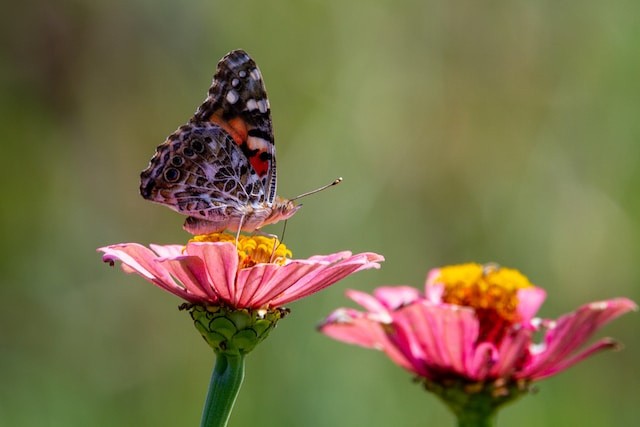The outcomes of years of fieldwork have been released by an international research team looking for painted lady butterfly breeding habitats in Africa.
Following route of painted lady butterflies as traveling across Africa

Moving about all the time is the painted lady butterfly. The species engage in intergenerational round-trip migrations when individuals returning to a region will be a number of generations removed from those who previously visited, as per Phys.org.
Their distribution throughout the European winter has long been a mystery, despite the fact that they are widespread travelers and may be found practically anywhere.
There are a few identified sites in North Africa, yet not nearly enough to account for most of the population throughout the season, and scientists hypothesized that there would be more sites farther south.
Using data collected from 646 breeding locations across 30 nations, the scientists developed an ecological niche modeling prediction.
The team believed that the breeding grounds' ideal settings would likely be preserved during migration to Africa.
With the help of the generated data set, researchers were able to identify the places where probabilities were highest with a monthly resolution.
The model indicated that a semiarid sub-Saharan Sahelian region and the Sudanese Savannah would become extremely appropriate in September, with suitability increasing in October, which served as the first confirmation of this strategy.
These places were visited by researchers who waited there. The model was confirmed by the appearance of migrating flocks and the abundance of immaturity throughout the Sahelian region and the Sudanese Savannah. To determine where the butterflies flew after that, the researchers again turned to ecological niche modeling.
Painted Lady Butterfly is known for its immigration
With the exception of Antarctica and Australia, the Painted Lady Butterfly is the most common butterfly species on earth as per University of Colorado Boulder.
The family Nymphalidae, including Painted Ladies, is known for their sensitive hair-covered shortened forelimbs.
These sensory hairs aid adult butterflies in navigating their surroundings, such as by assisting them in selecting the best host plants for egg-laying.
The most noteworthy aspect of painted lady butterflies' migrations, which, in contrast to those of numerous other migratory species, lack a seasonal pattern, is their long migrational distances,
There is speculation that the number of their larval host plants, which may be impacted by severe rain events like El Niño, influences their migratory habits.
In North America, painted lady butterflies typically migrate in a northwesterly direction throughout the spring, and occasionally observe a second migration back southward throughout the fall.
Painted Lady butterflies travel far for survival
In the summer, the Painted Lady moves northward across continents. Because there isn't enough foliage for the butterfly's caterpillars to survive on, it is thought that record southern temperature might be causing migrations northward, as per University of York.
The butterfly's ability to migrate helps it avoid freezing weather, dead host plants, and virulent parasite diseases.
This small organism, which has a brain the size of a pin and weighs less than a gram, migrates across continents in search of plants for its caterpillars to consume. It has no opportunity to learn from more seasoned individuals.
© 2025 NatureWorldNews.com All rights reserved. Do not reproduce without permission.





